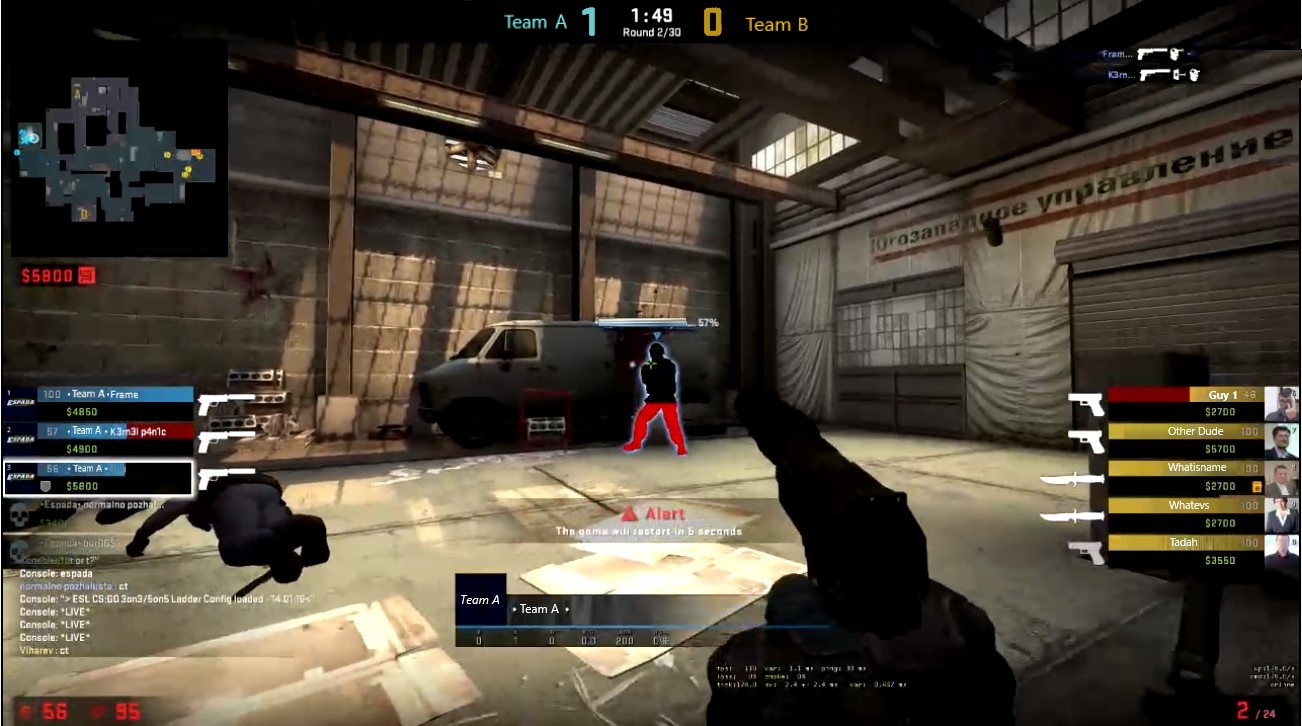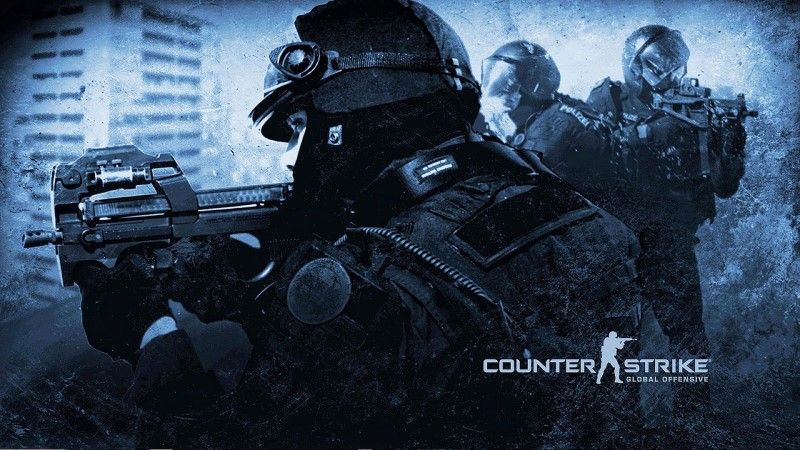Counter-Strike: Global Offensive (CS:Go) is a once-off P2P FPS title that pits Counter-Terrorists against Terrorists in a multiplayer video game that was released by Valve Corporation in August 2012. Players can also play offline against AI bots, or trial this version as F2P on steam. It marks the fourth title in the Counter-Strike franchise.
Gameplay

During the game, players will receive one or more objectives according to the map that they are playing on. In addition to the objectives, each map will also determine the number of rounds per match, as well as the type of terrain and structures that the characters will be fighting in. In some cases, the goal will be termination of the enemy, while in others it will be a different objective. Regardless, killing opponents will still generate rewards for the player’s character.
Each map has a number of rounds allocated to it, with each round being restricted to a specific time-frame. Game times can last anywhere from five minutes to an hour, depending on the skill-levels of the players and early game-domination. The map and match types will be discussed in-depth further on.
All characters are set to run as a default, and players will have to set a shortcut on their keyboard for when they would prefer their character to walk silently. Character speed is also affected by the type of weapon that they are currently using. For instance, knives are the lightest weapons, and therefore allow for the greatest player speed and mobility when activated. But, a heavy weapon such as the Negev, will reduce the character’s speed by over 22%. Another factor influencing character speed is injury. The worse the wound; the slower the speed. This will only last for a couple of seconds, but it can mark the differences between the character’s life or death.
Between each round, players will be able to restock on armor and weaponry by using the money that they earned during the previous round. This means that each time the game progresses to a new round, one team will have an advantage over the other, as the winning team will have had more funds to better-equip themselves than the opposing team. This encourages team-interaction and support, thereby preventing a specific player from dominating the game. Players will only respawn when a particular round is complete.
Players will start receiving skill ranks after their first ten wins. However, players will only be matched with other players within five ranks of their own. The exception to this is where players already have a team of five with the whole team waiting for a match-up. There are currently 18 skill levels in CS:GO.
Maps
CS:GO offers teams a selection of maps, each of which offer different objectives. New maps are added to the game incrementally. Some are created by Valve, while others are created by players and approved by Valve. There are also maps that can be played on non-Valve servers. The CS:GO team also sometimes create seasonal maps with fun twists, such as a Halloween version of the Cobblestone map in 2018, and reanimated zombie-chickens running around in 2013. There are two main map-types:
Bomb Defusal
The Terrorists are tasked with setting a bomb at a specific location and guarding it. On the other hand, the Counter-Terrorists are responsible for either preventing it from being planted or locating and disarming the bomb.
Hostage Rescue
This scenario finds the Terrorists protecting a group of hostages, while the Counter-Terrorists attempt to kill the opposing team and save the hostages.
Game Modes
There are a number of game modes that players can choose from. The number of players per team, type of game mode and objectives are dictated by the map chosen. Players lacking teammates and apply to be queued for team match-ups, making this game accessible even to those who don’t have any gaming friends.
-
Competitive:
This is the 5v5 team-ranked system that uses an automatic match-making system based on skill-levels when pairing opposing teams to ensure fair competition between the opponents. This is a best of 13-round match-up, where either the first team to win 16-matches or the majority of the overall matches wins. Each round is a maximum of 1 minute 55 seconds long, with a 40-second timer on the bomb. At the 15-match mark, teams will swap objectives.
-
Casual:
Offers an easier option for new players, as players will automatically receive armor and equipment. Other aspects are also removed such as friendly-fire and needing to re-stock on armor between rounds. More players can participate in matches than in Competitive Mode. In addition to there only being eight rounds, players can join or leave at any stage. This means that they won’t be stuck playing for the full session if they don’t want to. This mode isn’t ranked.
-
Wingman:
This is a 2v2 single-bomb mode. Players can queue for partners or select their own teammate. The gameplay and rules are according to Competitive Mode’s bomb defusal scenario.
-
Arms Race:
Players automatically earn a new weapon each time they kill an opponent, with each weapon being superior to their original weapon. Furthermore, as the game progresses, weapons will naturally wear down. This means that if players do not make enough kills, they may find themselves with nothing but a knife to compete with. The winner is the first player to acquire and make a kill with the golden knife.
-
Demolition:
In this format, players will be able to slowly upgrade their weapons as they rake up more kills. Teams will alternate objectives, taking turns defending and attacking a single bombsite.
-
Flying Scoutsman:
This is an 8v8 mode where players are only allowed access to SSG 08 sniper rifles and knives, while playing in a reduced-gravity mode. The winner is the first team to achieve nine wins.
-
Death Match:
This is a casual-mode killing-mode, where the goal is to accumulate as many kills as possible within a certain time-frame. Players respawn immediately and have a small window of time to restock on equipment before resuming the match.
Weapons and Equipment
With that said, players can purchase skins for their weaponry with real-world cash. However, these skins are purely cosmetic and offer no changes to the actual gameplay. These skins can either be purchased as random drops from crates or seen from other players on Steam’s marketplace. Crates cost $1.00 USD on Steam. Each skin also has a varying level of rarity, with their value ranging anywhere from $0.03 – $1,555 USD. However, there have been some weapons that have even raked in thousands of dollars for their owners, but they are not currently on the market. This makes crates a risky, but potentially highly lucrative gamble.
Although some players have commented that the general audio in the game is a bit lacking, each weapon does have its own unique sound. This can be advantageous for seasoned players who can recognize the different sounds and therefore identify the weapons being used by an opponent, provided that the opponent isn’t using a silenced weapon.

